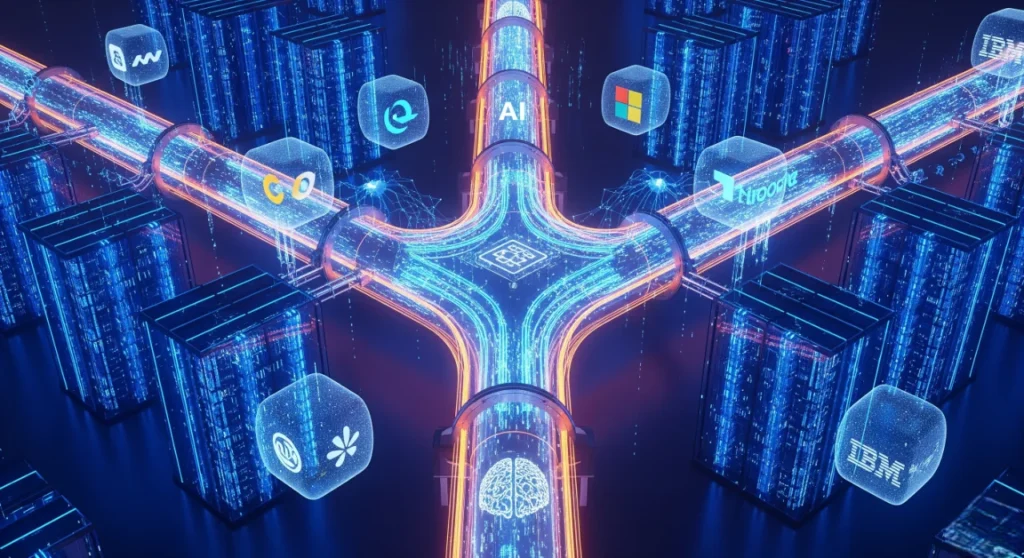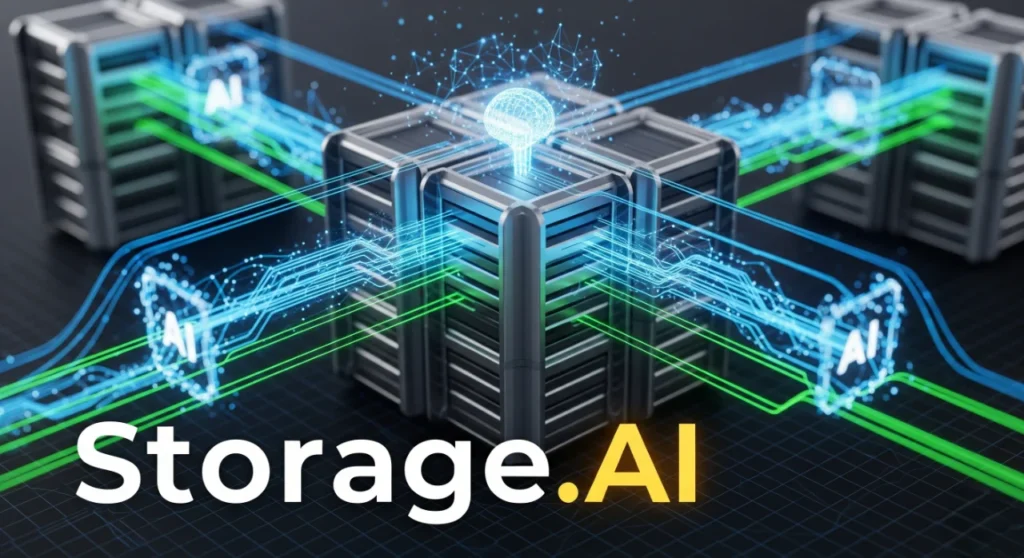SNIA’s new Storage.AI initiative, backed by tech giants, promises to clear the roadblocks that cripple modern AI performance.
In the rapidly evolving world of artificial intelligence, raw computing power is only half the story. As GPUs grow more powerful, the data infrastructure that supports them is showing serious signs of strain. Today, the Storage Networking Industry Association (SNIA) officially launched Storage.AI, an ambitious open-standards initiative backed by 15 industry titans—from AMD to Intel to IBM—to tackle one of AI’s most overlooked bottlenecks: data access after it hits the network.
This isn’t just a new protocol. It’s a fundamental reimagining of how AI data moves—especially once it leaves high-performance fabrics and hits storage networks, where many current systems start to stumble.
Key Takeaways:
- Storage.AI is an open-standard effort backed by major vendors like Cisco, Dell, and Samsung.
- It addresses data handling inefficiencies after data reaches GPU clusters.
- Targets post-network latency and CPU-GPU bottlenecks, not competing with Ultra Ethernet.
- Enables GPU-initiated I/O and direct data access without CPU mediation.
- Modular deployment strategy allows faster implementation without full protocol lock-in.
Why This Matters Now
AI workloads have shifted the ground beneath traditional IT infrastructures. Massive GPU clusters rely on fast, efficient access to data—but today’s storage architectures weren’t designed for the complex data paths machine learning requires.
“If you’ve got a roadblock at the other end of the wire, then Ultra Ethernet isn’t efficient at all,” explains J Metz, SNIA chair and also head of the Ultra Ethernet Consortium’s steering committee. His point is simple: blazing-fast networks are only useful if data doesn’t hit a wall on the other side.
Post-Network Chaos: Where the Real Problem Begins
Most think the networking layer is where latency begins and ends. But for AI applications, that’s not where the real bottlenecks lie.
Once AI data reaches the destination, it still has to travel a labyrinth of CPU handshakes, management networks, and storage controllers before it finally hits GPU memory. This constant back-and-forth burns bandwidth, adds latency, and strangles performance.
Today’s architecture forces every I/O operation through CPUs. That means a GPU with 15,000 cores has to patiently wait on a CPU with a fraction of the processing muscle to allow every data access. The imbalance is stunning—and dangerous for real-time AI tasks.

What Is Storage.AI Actually Doing?
Storage.AI is stitching together multiple existing technical specifications that were previously working in silos:
- SDXI (Smart Data Accelerator Interface): Moves memory efficiently at hardware level.
- GPU Direct Access & GPU-Initiated I/O: Lets GPUs skip the CPU line and talk directly to storage.
- File and Object over RDMA: Enables low-latency storage protocol over high-speed networks like Ultra Ethernet.
- Compute-Near-Storage Frameworks: Pushes compute closer to where data is actually stored.
- NVM Programming Models: Taps into the unique speed of non-volatile memory for AI processing.
This modular system means vendors can deploy improvements step-by-step, without waiting for an all-or-nothing rollout. It’s designed for flexibility and speed—two things the AI space desperately needs.
The Bigger Picture: AI Is Breaking Old Assumptions
AI pipelines—ingestion, preprocessing, training, inference—each demand radically different data access patterns. These aren’t static, predictable loads. They’re dynamic, multistage, and highly resource-intensive. Traditional storage systems just weren’t built for that.
“Most people don’t realize the data doesn’t actually live inside the networks they think it does,” Metz points out. “It takes a bunch of detours, and every detour kills performance.”
By standardizing ways to reduce those detours, Storage.AI is setting the stage for a new era of high-efficiency AI processing—where GPUs can talk directly to the data they need, when they need it.
Why It’s a Smart Bet for the Industry
Unlike many grand alliances of the past, Storage.AI doesn’t ask vendors to throw everything out and start over. Instead, it brings together proven technologies into a single, cohesive playbook.
It’s a shift from patchwork hardware fixes and proprietary solutions to open, vendor-neutral infrastructure upgrades—the kind that can scale across enterprises and cloud hyperscalers alike.
And in a world where AI’s appetite for data is growing exponentially, that scalability might make all the difference.
Conclusion
SNIA’s Storage.AI isn’t just about efficiency—it’s about unlocking the full potential of the AI revolution. With foundational support from major players and a laser focus on real-world implementation, this initiative could quietly become one of the biggest breakthroughs in enterprise AI infrastructure.
If AI is the engine, Storage.AI wants to be the road—smooth, fast, and ready for the future.
